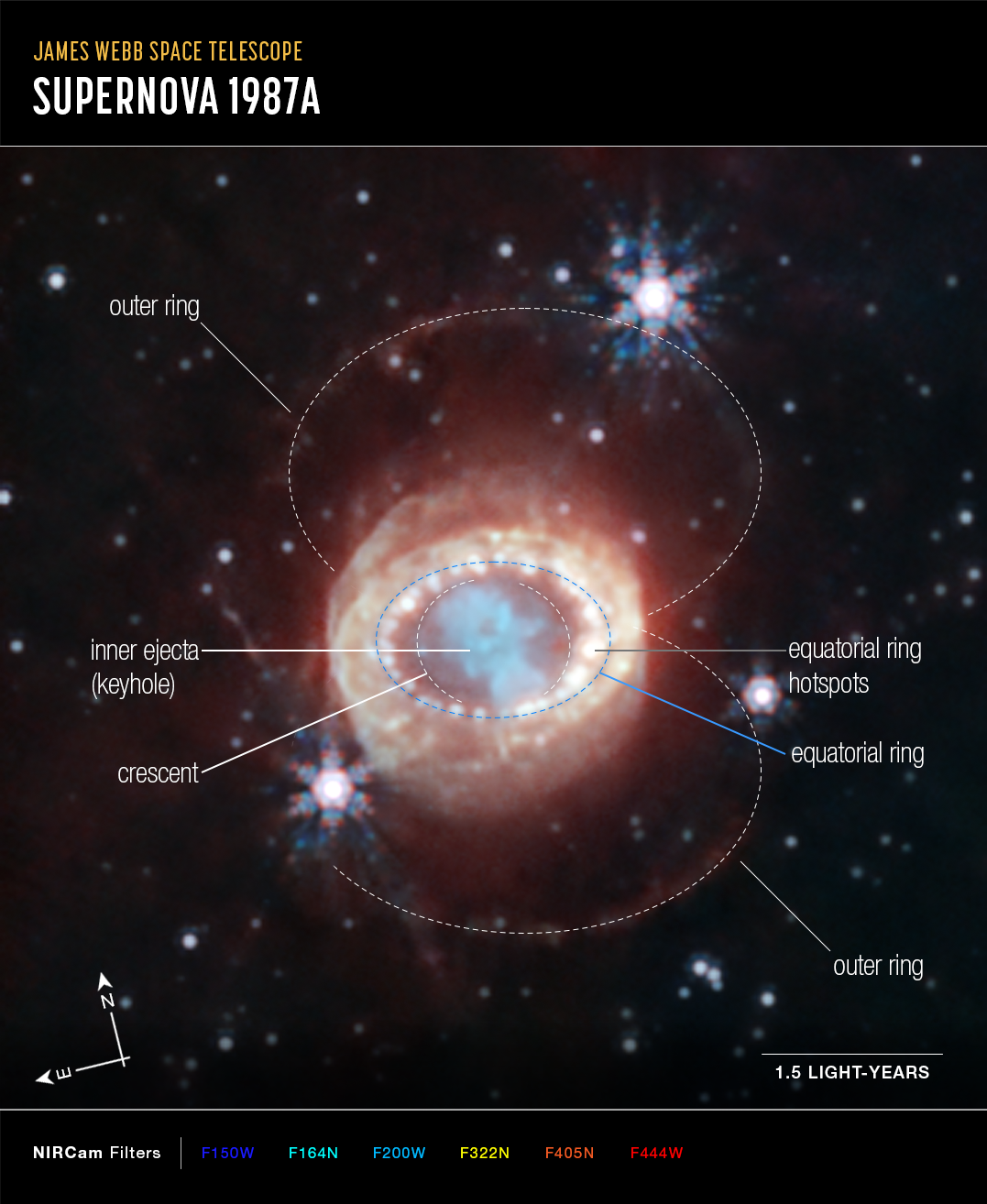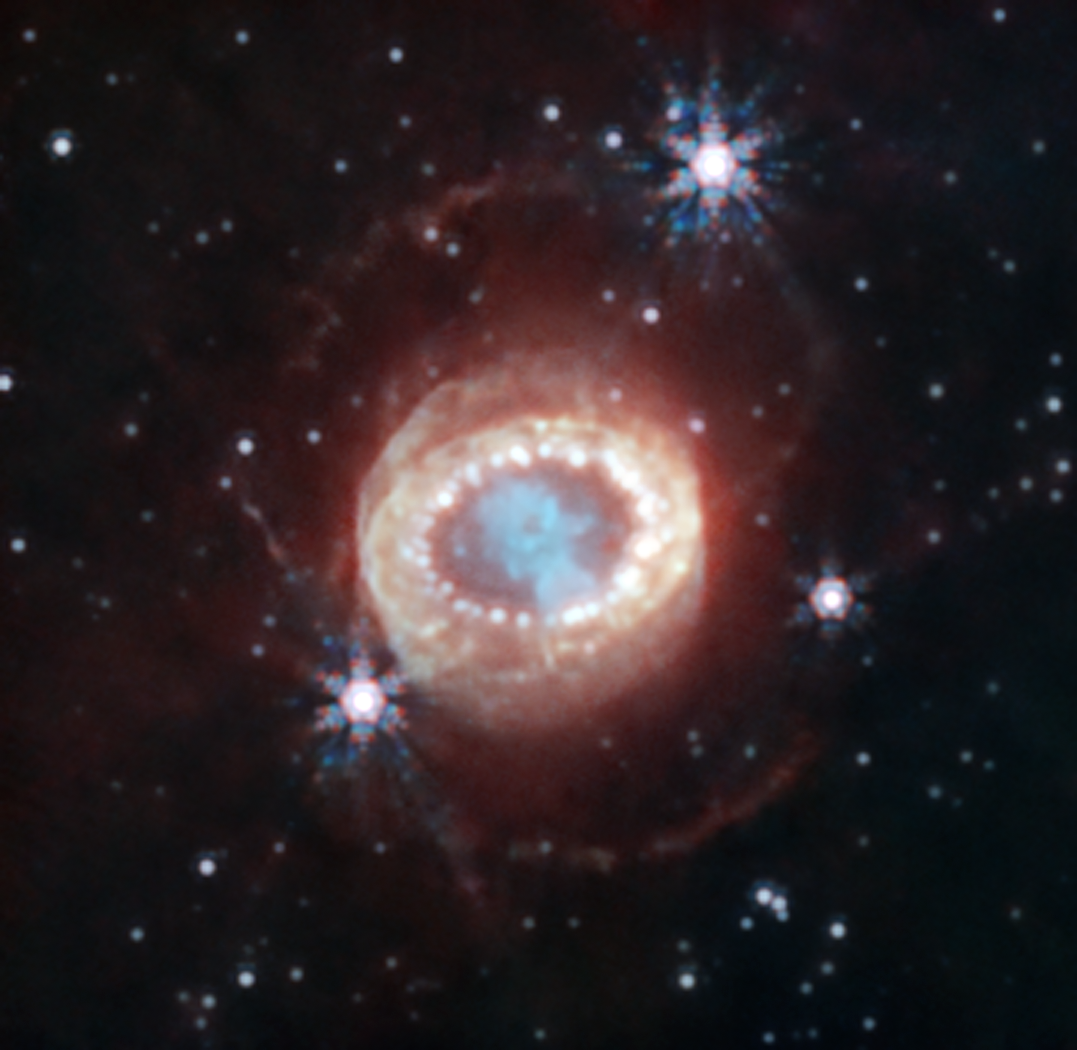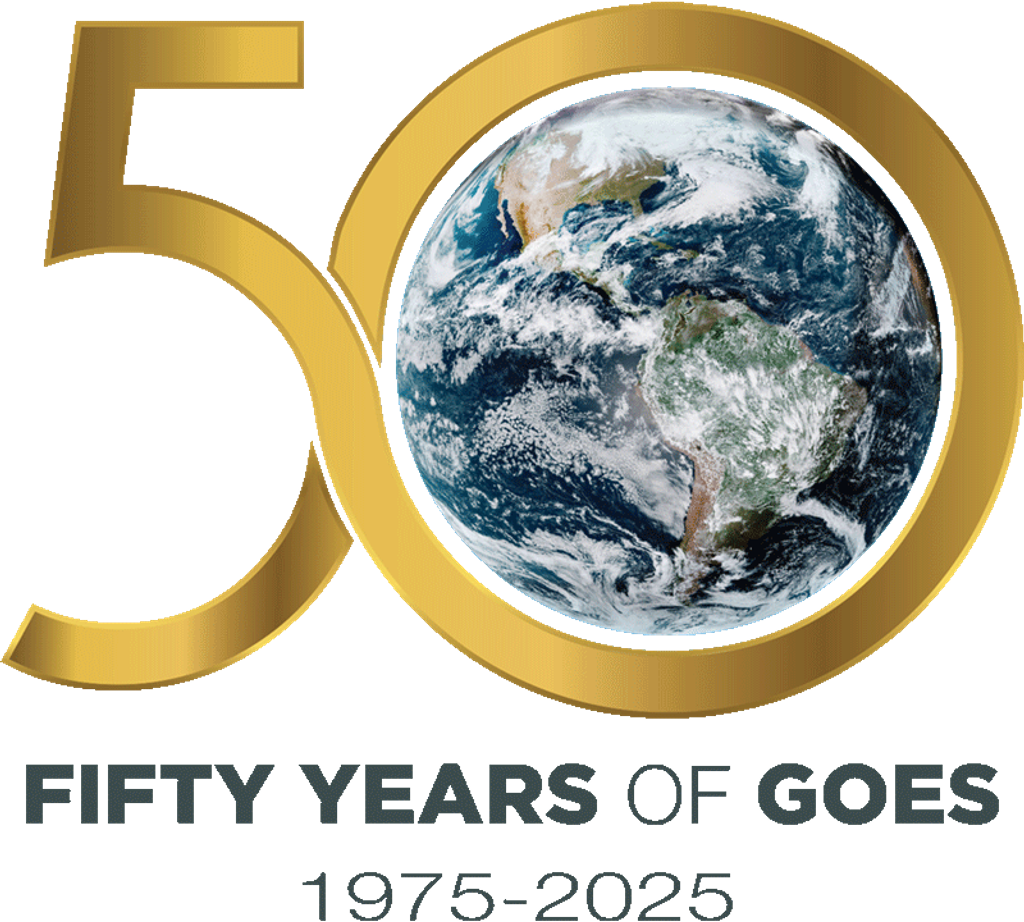1 min read
Supernova 1987A (NIRCam Compass Image)

Webb’s NIRCam (Near-Infrared Camera) captured this detailed image of SN 1987A (Supernova 1987A), which has been annotated to highlight key structures. At the center, material ejected from the supernova forms a keyhole shape. Just to its left and right are faint crescents newly discovered by Webb. Beyond them an equatorial ring, formed from material ejected tens of thousands of years before the supernova explosion, contains bright hot spots. Exterior to that is diffuse emission and two faint outer rings. In this image blue represents light at 1.5 microns (F150W), cyan 1.64 and 2.0 microns (F164N, F200W), yellow 3.23 microns (F323N), orange 4.05 microns (F405N), and red 4.44 microns (F444W).
Extended Description and Image Alt Text
Extended Description
Image titled “James Webb Space Telescope: Supernova 1987A” with compass arrows, scale bar, and color key.
Image
A supernova with its components labeled. The center of the image contains a dense green cloud, shaped like a keyhole. A white line points to this area, labeled “inner ejecta (keyhole)”. Outside of this region are two, curved dotted lines with a white line pointing to the left one, labeled “crescent”. Outside of this cloud of gas is a ring of dense orange gas and dust that becomes more diffused as it travels further away from the center. A dotted blue line is overlaid in the center of this ring with a blue line that is labeled “equatorial ring”. The innermost part of this dense orange ring contains brighter orange clumps of glowing gas. There is a gray line pointing to one of these hotspots labeled “equatorial ring hotspots”. Outside of these structures, both above and below them, are very faint orange rings of gas and dust. They are overlain with dotted lines and both have white lines pointing to them, labeled “outer ring”. There are several white stars are strewn throughout the image.
Compass Arrows, Scale Bar, and Color Key
At the bottom left are compass arrows indicating the orientation of the image on the sky. The north arrow points in the 11 o’clock direction. The east arrow points toward 8 o’clock. At the lower right is a scale bar labeled 1.5 light-years. The length of the scale bar is approximately one-fifth the total width of the image. Below the image is a color key showing which NIRCam filters were used to create the image and which visible-light color is assigned to each filter. From left to right, NIRCam filters are: F150W is blue; F164N is a greenish blue; F200W is light blue; F322N is yellow; F405N is orange; and F444W is red.
Image Alt Text
A supernova with its components labeled. The center of the image contains a dense green cloud, shaped like a keyhole. A white line points to this area, labeled “inner ejecta (keyhole)”. Outside of this region are two, curved dotted lines with a white line pointing to the left one, labeled “crescent”. Outside of this cloud of gas is a ring of dense orange gas and dust that becomes more diffused as it travels further away from the center. A dotted blue line is overlaid in the center of this ring with a blue line that is labeled “equatorial ring”. The innermost part of this dense orange ring contains brighter orange clumps of glowing gas. There is a gray line pointing to one of these hotspots labeled “equatorial ring hotspots”. Outside of these structures, both above and below them, are very faint orange rings of gas and dust. They are overlain with dotted lines and both have white lines pointing to them, labeled “outer ring”. There are several white stars are strewn throughout the image.
About the Object
- R.A. PositionR.A. PositionRight ascension – analogous to longitude – is one component of an object's position.05:35:28.03
- Dec. PositionDec. PositionDeclination – analogous to latitude – is one component of an object's position.-69:16:11.8
- ConstellationConstellationOne of 88 recognized regions of the celestial sphere in which the object appears.Dorado
- DistanceDistanceThe physical distance from Earth to the astronomical object. Distances within our solar system are usually measured in Astronomical Units (AU). Distances between stars are usually measured in light-years. Interstellar distances can also be measured in parsecs.Approximately 163,000 light-years (50 kiloparsecs) away.
- DimensionsDimensionsThe physical size of the object or the apparent angle it subtends on the sky.Image is about 10.8 arcseconds across (8.5 lightyears)
About the Data
- Data DescriptionData DescriptionProposal: A description of the observations, their scientific justification, and the links to the data available in the science archive.
Science Team: The astronomers who planned the observations and analyzed the data. "PI" refers to the Principal Investigator.This image was created with Webb data from proposal: 1726 (M. Matsuura)
- InstrumentInstrumentThe science instrument used to produce the data.NIRCam
- Exposure DatesExposure DatesThe date(s) that the telescope made its observations and the total exposure time.1-2 September 2022
- FiltersFiltersThe camera filters that were used in the science observations.F150W; F164N; F200W; F323N; F405N; F444W
- Object NameObject NameA name or catalog number that astronomers use to identify an astronomical object.SN 1987A
- Object DescriptionObject DescriptionThe type of astronomical object.Supernova Remnant
- Release DateAugust 31, 2023
- Science ReleaseWebb Reveals New Structures Within Iconic Supernova
- CreditNASA, ESA, CSA, Mikako Matsuura (Cardiff University), Richard Arendt (NASA-GSFC, UMBC), Claes Fransson (Stockholm University), Josefin Larsson (KTH); Image Processing: Alyssa Pagan (STScI)

This image is a composite of separate exposures acquired by the James Webb Space Telescope using the NIRCam instrument. Several filters were used to sample specific wavelength ranges. The color results from assigning different hues (colors) to each monochromatic (grayscale) image associated with an individual filter. In this case, the assigned colors are: Blue: F150W, Cyan: F164N, Cyan: F200W, Yellow: F323N, Orange: F405N, Red: F444W
Related Images & Videos

Supernova 1987A (NIRCam Image)
Webb’s NIRCam (Near-Infrared Camera) captured this detailed image of SN 1987A (Supernova 1987A). At the center, material ejected from the supernova forms a keyhole shape. Just to its left and right are faint crescents newly discovered by Webb. Beyond them an equatorial ring,...
Share
Details
Laura Betz
NASA’s Goddard Space Flight Center
Greenbelt, Maryland
laura.e.betz@nasa.gov
NASA, ESA, CSA, Mikako Matsuura (Cardiff University), Richard Arendt (NASA-GSFC, UMBC), Claes Fransson (Stockholm University), Josefin Larsson (KTH)
Alyssa Pagan (STScI)






























